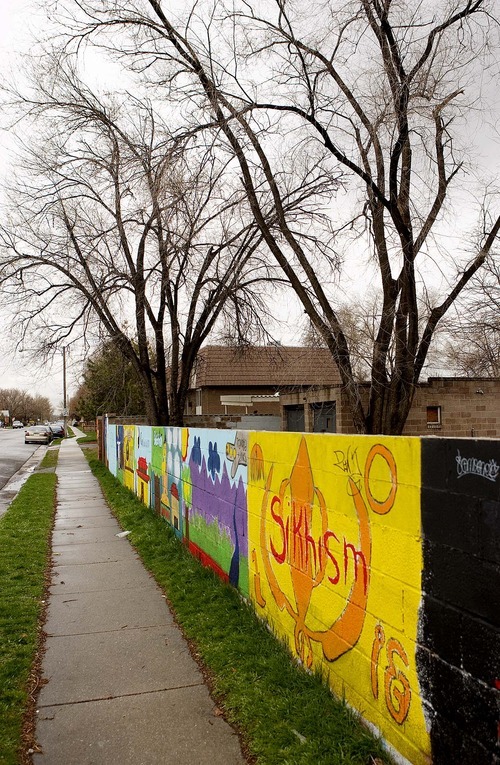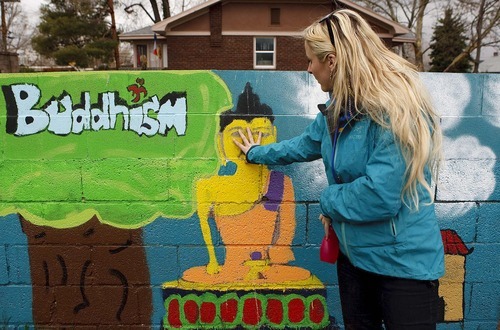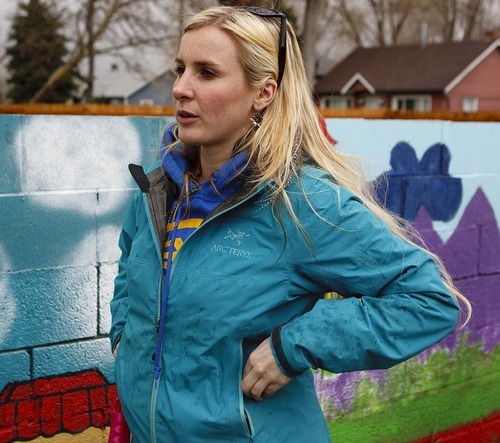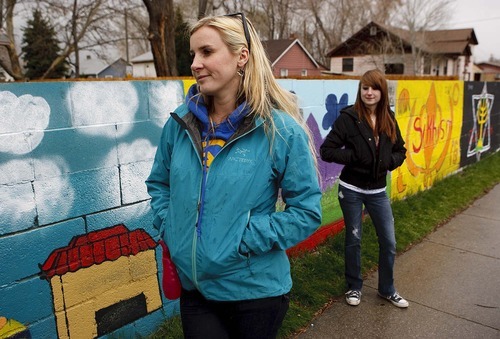This is an archived article that was published on sltrib.com in 2011, and information in the article may be outdated. It is provided only for personal research purposes and may not be reprinted.
South Salt Lake • Taylorsville High School teacher Jessi Cummings spent hundreds of dollars painting over the unceasing graffiti on the wall next to her house to no avail.
"I bought this house and this wall gets graffitied all the time with gang tags," Cummings said of the 5-foot-high, 80-foot-long gray cinderblock wall outside her house at 200 East and Sunset Avenue (about 2800 South). "I was just sick of it. Police would say, 'You need to get that taken off.'
"If I don't cover it, I get charged, I have to pay a fine in order to have someone else cover [or paint over] it."
After whitewashing the wall one final time late last year, the English teacher came up with a way to teach nearly 40 students about project-based learning and solve her graffiti problem at the same time.
Cummings and history teacher Quinn Longhurst decided to co-teach a world history class in November, and asked students to depict 10 world religions on a mural on Cummings' wall. Students picked 10 religions — Buddhism, Sikhism, Scientology, Confucianism, Mormonism, Judaism, Christianity, Santería, Islam and Hinduism — then learned about each one and their symbols to design their 8-foot section of the wall.
Taylorsville High student Natalee Mathews picked a religion she knew nothing about: Confucianism.
"I thought it would give me a great learning experience, and it turned out to be," she said. "I learned a lot from this experience and this project, it was super fun."
The students worked on multiple drafts of their section of the mural before it was ready to paint in November. Students completed eight of the 10 sections of the mural, while Hinduism and Mormonism were left with placeholders that may not be finished.
Longhurst said the project-based learning process puts students in control but allows teachers to shape the path.
"They are the ones that go out and get the knowledge, we kind of guide them in the direction we want them to go," Longhurst said.
Longhurst and Cummings gave students primary sources of information on each of their chosen religions, but then asked them to visualize that information and represent it in their picture.
Cummings said she thinks students like Mathews remembered what they learned months after the class was over because they did a project.
"She didn't have to regurgitate information onto a test that she is going to forget," she said. "She actually remembers what she did, what she learned."
Mathews agrees.
"One of the main reasons why I remembered, is because it was really fun," she said. "I have never painted a mural before, so by doing this it just kind of stayed in my brain."
As for painting the wall again, Cummings said she won't do another mural on the same wall because she doesn't want to cover up her students' work.
But she is open to other ideas, because not only did the project help students, but it also helped the neighborhood.
"I have had comments from police, the neighborhood, everybody was saying that this is a good thing, because the graffiti has stayed off — for the most part."
Have an idea?
O Have you wondered about the backstory of something in your neighborhood?
Email • cimaron@sltrib.com
Twitter • @cimcity —
More online
See more photos and video interviews. • http://www.sltrib.com















